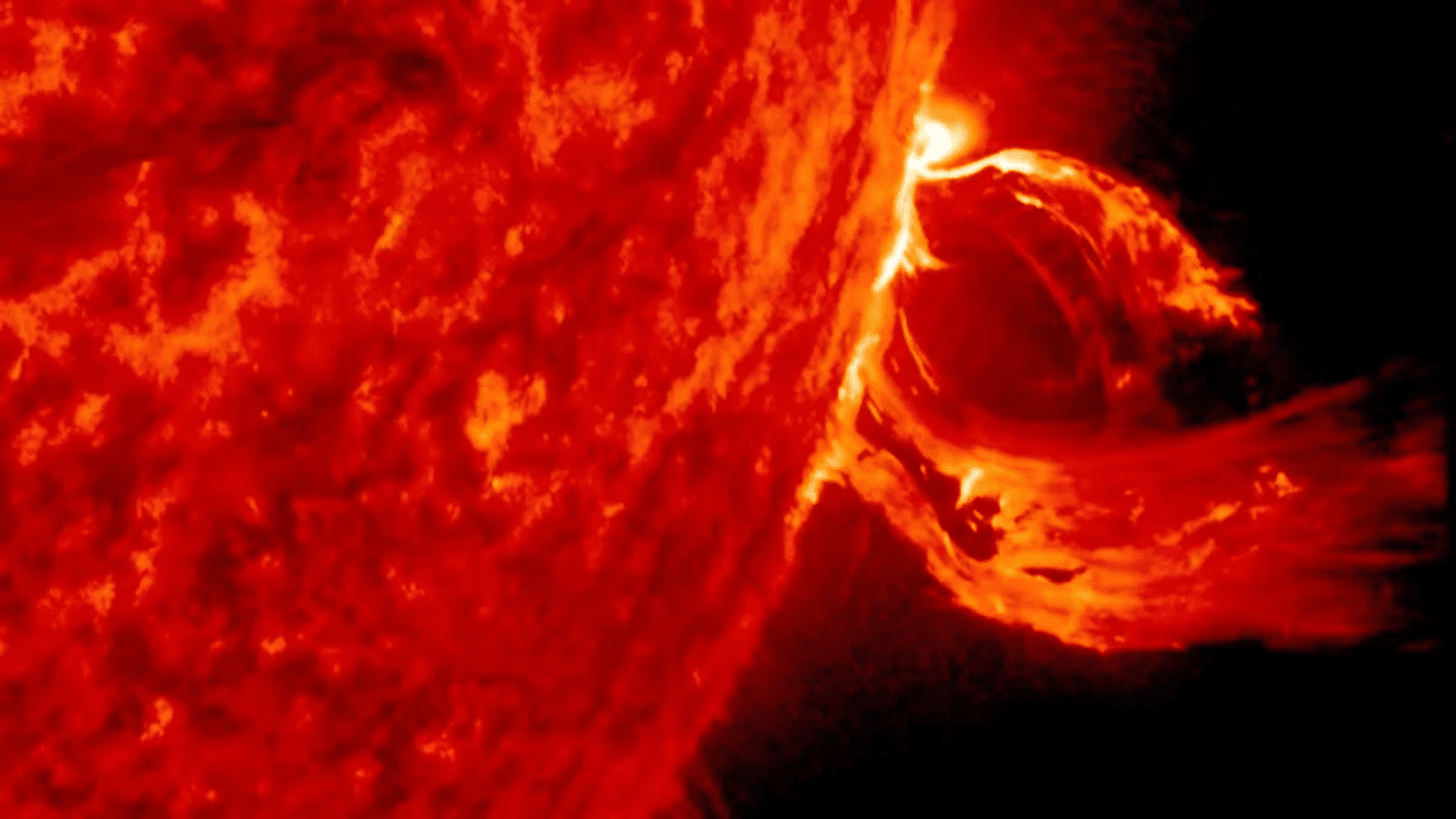Though predicting space weather can be difficult, researchers are now reporting a better understanding of solar storms.

Coronal mass ejections, or CMEs, are powerful expulsions of the Sun’s magnetic field and plasma. The plasma can sometimes cause geomagnetic storms because it’s made of charged particles that react when colliding with the Earth’s magnetosphere and are carried toward the polar regions, causing auroras.
As these storms can cause technology such as satellites to malfunction, predicting the storm’s intensity is important. One means of gauging the intensity of a solar storm is the speed of CMEs after they erupt from the Sun.
Though this is usually measured once the CME is released, scientists have now discovered a way to predict the event’s speed before the eruption.
“There are ways to look into the CMEs before they even have erupted from the Sun, and that is by looking into their source region evolutions,” lead researcher Dr Harshita Gandhi, a solar physicist at Aberystwyth University, told IFLScience.
The research team examined “active regions” on the Sun, or regions where CMEs are born. Once they measured the properties of the region before, during, and after a CME’s release, they were able to estimate a parameter called “critical height.”
“Critical height” is a height measurement above which the magnetic field becomes unstable and can lead to a CME emission. But they discovered that this height is also linked to speed.
“The higher the critical height you find in the corona in your active region, the faster the CME’s speed you would expect from that active region,” Dr Gandhi explained.
Therefore, if researchers estimate the height, they can also predict the likely speed of the CME, which allows them to make predictions about how dangerous a CME may become.
The team believes that also calculating the strength of the magnetic field would help with more accurate speed estimates. Since the Sun is already monitored by space agencies worldwide, implementing these predictive measures should be relatively simple.







